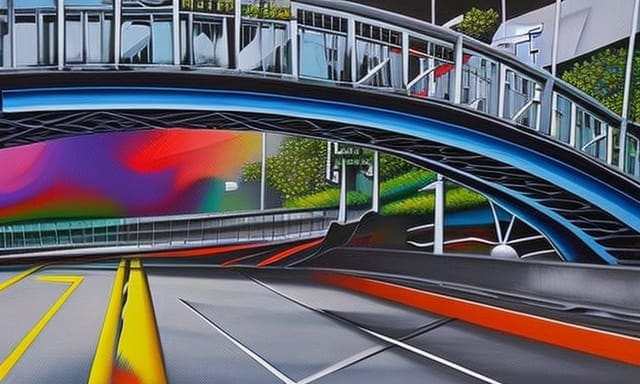A Safe and Accessible Way to Get Around
Are you tired of dodging cars and waiting at busy intersections to get across the street? The good news is that cities worldwide are starting to invest in urban pedestrian bridges and crossings to make it easier and safer for people to get around on foot.
In this article, we’ll explore the history of pedestrian bridges and crossings, the benefits of these structures, and some examples of cities that have successfully implemented them.
The History of Pedestrian Bridges and Crossings
Pedestrian bridges and crossings have been around for centuries, but they have evolved to become more functional and aesthetically pleasing. In the past, these structures were often simple wooden bridges or tunnels built to provide safe passage for pedestrians.
Today, they are more commonly made of steel or concrete and feature modern designs that can be both practical and visually appealing.
The Benefits of Pedestrian Bridges and Crossings
Pedestrian bridges and crossings offer many benefits to cities and their residents, including:
- Increased safety: By separating pedestrians from vehicular traffic, these structures can help to reduce the risk of accidents and injuries.
- Improved accessibility: Pedestrian bridges and crossings can make walking on foot easier, particularly for those with mobility challenges.
- Enhanced walkability: By creating more opportunities for walking, these structures can help to promote a healthier and more active lifestyle.
- Better traffic flow: By reducing the number of pedestrians at busy intersections, these structures can help improve vehicle traffic flow.
Examples of Successful Pedestrian Bridges and Crossings
Many cities around the world have successfully implemented pedestrian bridges and crossings, including:
- Tokyo: The city has a network of elevated pedestrian walkways that connect train stations, shopping districts, and other key destinations. This network helps to keep pedestrians safe and dry during rainy weather.
- Vancouver: The city has several pedestrian-only bridges, including the Capilano Suspension Bridge, which offers stunning views of the surrounding landscape.
- London: The city has several pedestrian-only crossings, including the iconic Abbey Road Crossing, made famous by The Beatles.
Overcoming Challenges
While pedestrian bridges and crossings offer many benefits, they can also present challenges for cities and residents. Some common challenges include:
- Cost: Building these structures can be expensive, and cities may need to find creative ways to fund these projects.
- Design: Pedestrian bridges and crossings must be designed with both function and aesthetics in mind, which can be a challenge.
- Maintenance: These structures require ongoing maintenance to ensure their safety and longevity.
However, these challenges can be overcome with careful planning, public support, and partnerships with private organizations.
Frequently Asked Questions
Q: Are pedestrian bridges and crossings only for large cities?
A: No, cities of all sizes can benefit from these structures.
Q: Do pedestrian bridges and crossings impact traffic flow?
A: In some cases, these structures can help to improve traffic flow by reducing the number of pedestrians at busy intersections.
Q: Are pedestrian bridges and crossings safe?
A: These structures are designed to be safe and accessible for pedestrians of all ages and abilities.
Conclusion
Pedestrian bridges and crossings offer a safe and accessible way for people to get around on foot. While they can present challenges, their benefits make them a worthwhile investment for cities looking to improve walkability and safety.
Whether you’re a commuter, a tourist, or a resident, these structures can make exploring the city on foot easier and more enjoyable.








